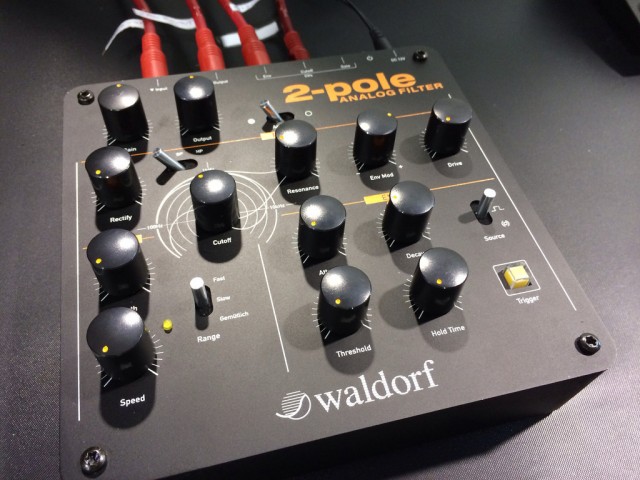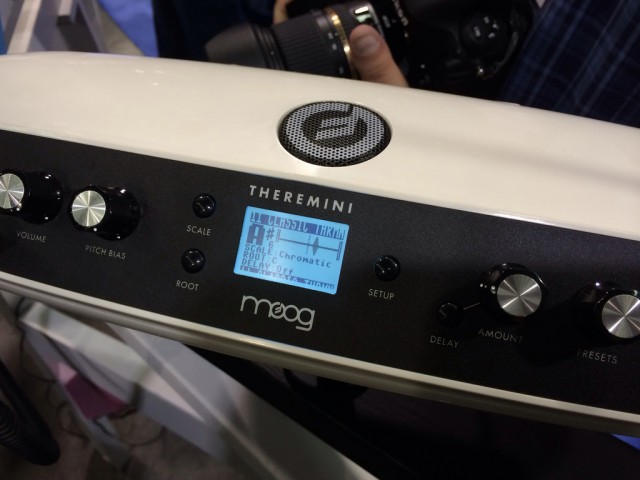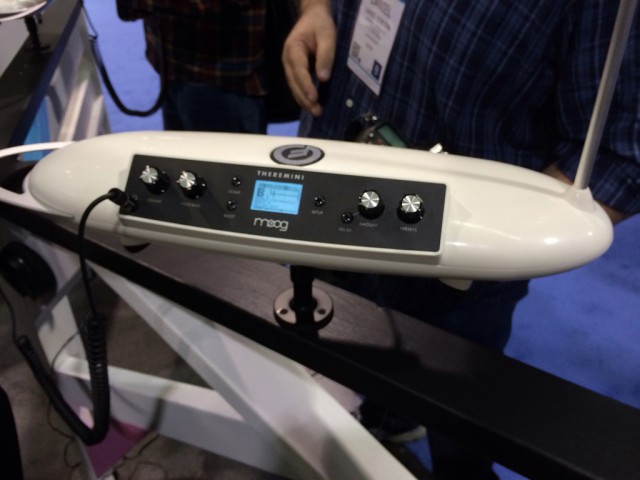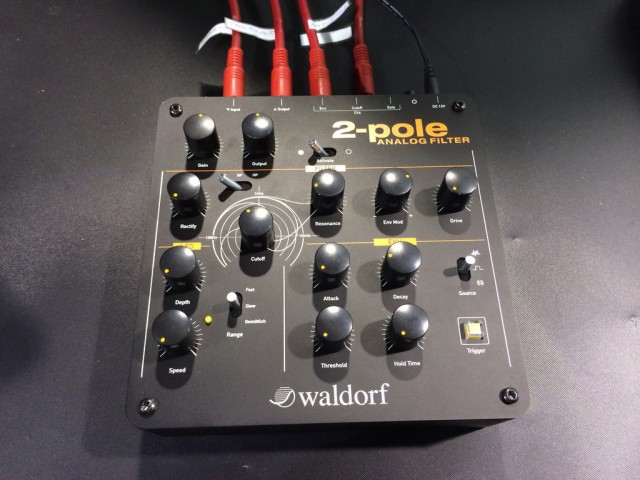Our own Marsha Vdovin is working the NAMM floor, too, and her radar is leading her straight to some really nice gems. I had to pull two of these out, as they’re big surprises and look tasty indeed. And who would have thought a filter and a Theremin would be news?
Well, these are drool-worthy, nonetheless.
Waldorf’s mystery knob is the filter control from a big filter in a box.
That’s right, Waldorf is introducing a 2-pole filter. And one heck of a 2-pole filter it is:
- Filter with cutoff and resonance, but also a Drive setting, Rectify, and switchable between low-pass, band-pass, and high-pass
- LFO with Depth and Speed
- LFO set to Fast, Slow, and (hilariously) Gemütlich (kinda hard to translate, actually easy-going and slower than slow)
- Envelope controls: Attack/Decay/Hold, threshold, a source (hard to tell what that does), and trigger.
And it takes CV for envelope, cutoff, and gate, with jack plugs for input and output.
Then there’s Moog, who are introducing, as rumored, a new Theremin. And this isn’t just any Theremin: it’s a Theremin that can assist you in keeping things in tune, all whilst looking like a space-age egg from Woody Allen’s Sleeper.
It’s a Theremin with presets. Crazy presets.
It’s a digital instrument with Theremin-style controls. (Readers who speculated, you guessed right.) It’ll upset purists, perhaps, but this is rather cool: it’s based on the unique-sounding Animoog sound engine.
The synth is digital, but the input is analog: classic heterodyning style, then digitized as control signal for the engine. Onboard MIDI, CV output (presumably pre-digitization, in fact), and USB. But that engine gives you more different ways to play.
Yes, there’s a display, scale and root controls, a Presets knob, plus built-in delay. There’s a built-in speaker and headphone jack, as well, for convenience.
Price: US$299 estimated is what we heard on the floor.
Moog introducing a new Theremin is huge news – historic news. After all, it was Bob Moog’s love affair with the Theremin that drove him to synthesis in the first place. It was always a favorite instrument. And if the Theremin drove Bob Moog’s path and evolution, it has guided a whole lot of the last century of electronic music, too – through Dr. Moog and many other artists and inventors, too. I’m fortunate to be spending this week with Andrey Smirnov, keeper of some of the Russian side of that legacy. I hope to catch up with the latest chapter of the Theremin story in North Carolina afterwards. And that’ll take some time, so I have no problem avoiding doing it on a crowded trade floor.
More photos:
Photos by Marsha Vdovin.



